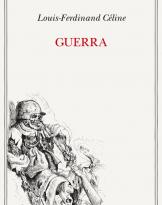Biagio Di Grazia
Ed. Delta 3
pagg.184
General Di Grazia is known to the readers of Online Defense and this is his third book (1). Building on his experience in the former Yugoslavia, here he analyzes the perverse mechanisms through which the UN was overtaken by NATO after the fall of the Berlin Wall and, today, is fueling a war in Ukraine without officially waging it.
The war in Ukraine has been going on for a year, but it started long ago. It is easy to describe the current scene, with a firm front as in the First World War; less easy to understand what triggered a war in central Europe after seventy years of armed but overall stable strategic balances (apart from ex-Yugoslavia, but we will come back to that).
As usual we must start from the fall of the Berlin Wall (1989) and follow the disintegration of the Soviet Union. The vacuum of power thus created has not led to a new balance, but rather to world disorder, to the permanent imbalance in relations between states. If Italy took the opportunity to demobilize the defense of the North-East border (to the astonishment of Serbia), while instead NATO, born as a defensive structure, in the meantime expanded to the East at the expense of the countries subject to the Warsaw Pact, realizing The Drang nach osten so dear to the Germans and arousing the frustrations of Russia, at that time too weak to react.
The accession to NATO of nations formerly under Soviet hegemony was freely and rapidly ratified, but the end of the Cold War and the enlargement of NATO were presented as a victory over the enemy, without however being the object of negotiation with the other party. A strategic mistake: it made more sense to dissolve the Alliance and integrate it into a European security system capable of involving the Russians as well, with whom joint exercises were in any case managed for a few years until Putin's power was consolidated (2).
The first effect of the end of a bipolar equilibrium was seen in the ex-Yugoslavia with the operations Deliberate Force in Bosnia and Herzegovina (1995) e Allied Force against Serbia in 1999, where in both cases the UN was overtaken by NATO. The author insists a lot on this point: the disintegration of ex-Yugoslavia was the testing ground during which the various UN missions - first of all UNPROFOR - proved to be incapable and lacking in operational tools, limitations due to the intricate decision-making and operational mechanisms of the UN itself. And while Europe showed itself divided from day one, NATO - led by the United States - acted on the initiative by forcing its hand. For his part, General Rupert Smith, commander of the UNPROFOR mission in Bosnia and Herzegovina from 1995 to 1996, assumed responsibility for any decision in this regard and gave the green light to Western intervention (3). However, Sarajevo was liberated after three years of siege and the Dayton agreements were reached (21.XI.1995).
The story of the second operation is more complex: Milosevic' had not understood the weakness of Serbia after the breakup of Yugoslavia and in 1989 he revoked the autonomy granted by Tito to Kosovo, provoking violent protests which were repressed with an iron fist. And this is where US action comes in: once Bosnia-Herzegovina was settled, Serbia was an obstacle to the new international balance and in 1999 the conflict situation in Kosovo prompted NATO to defend the Kosovar community and to support its aims 'independence.
NATO attempted to obtain UN Security Council authorization for military action, meeting opposition from vetoist nations Russia and China. The Security Council is also a strange body, given that now (April 2023) the rotating presidency has been assigned to Russia, which is a party to the conflict in Ukraine. At the time, NATO - that is, the United States and its closest allies, the British first - launched its campaign Allied Force without UN approvalclaiming it was a humanitarian intervention.
The Charter of the United Nations prohibits the use of force, except by a decision of the Security Council under Chapter VII, or in self-defense against armed attack, but neither circumstance was present in this case.
Since that day the concept of "Humanitarian War" has entered the lexicon of international politics, and to pay the price was Serbia, where the "humanitarian bombing" first it destroyed the foreseeable military structures and later all the infrastructure of the civil society, exactly what the Russians are now doing in the cities of Ukraine. In addition, the UCK, a questionable paramilitary formation, was supported and the independence of Kosovo was imposed, against the principle of the inviolability of borders but exalting that of the self-determination of peoples. In this the United States has a long tradition of inconsistency, which can historically be traced back to President Wilson (1913-1921), statesman to whom not even a street is dedicated in Italy.
But the beauty comes after the attack on the Twin Towers (2001). From that moment on, NATO transforms itself to fight the "global war on terrorism" (5). Finally an enemy! But which?
Article 5 of NATO (if a member of the alliance is attacked everyone must defend it) is bent to the new intervention strategy, which becomes a kind of blank mandate to conduct colonial police operations well beyond the geographical borders of the alliance itself and even “non-article 5 operations”, namely “crisis response operations, sometimes at short notice, away from their home bases, outside Allied territory” (6). But already the strategic concept of 1999 marked the passage from the war of defense of the territorial integrity of the member countries of the alliance, to a function of "crisis prevention and management” outside the territory of the member states”. With quite a few inconsistencies, given that an Islamic state was supported in Bosnia and then fought against it elsewhere, committing time and resources for twenty years in Muslim countries resistant to external influences, starting with Afghanistan.
Kosovo's independence is also dangerous: apart from its weak economic base, it conflicts with the principle of inviolability of borders and has provided a precedent for Russian claims on the Donbass.
And here we come to the last chapter, NATO in Ukraine (p. 175). Di Grazia theorizes that NATO has adapted in Ukraine the model of behavior it maintained in Serbia, not engaging directly on the ground and conducting operations freeing itself from both the Atlantic Charter and the UN: “not belligerent" but not "not meddling”, whereby it supplies Ukraine with weapons and ammunition and trains the Ukrainian military that those weapons will have to be used. Are there perhaps also “advisers” on the ground? Hard to know now. The fact is that, even if it is not formally, it looks like a NATO war against Russia, and it is felt as such by the Russian ruling class.
On the ground, strategically Russia has already lost the war. It can boast tactical successes, but the initial objective has not been achieved and NATO's technology and school of warfare have proven more effective than the once dreaded Red Army. In reality, both Serbia and Russia, albeit weakened, could be excellent allies, regardless of their system of power, but for now the wisdom is not of this world.
Marco Pasquali
NOTES
-
They have been reviewed on these pages Kosava. Wind of ethnic hatred in the former Yugoslavia from Tito to Milosevic e Why did NATO bomb Serbia in 1999?
-
See: The “IONIEX 2004” naval exercise is a significant step towards Italian-Russian cooperation / CF Luigi Sinapi, in Defense Information, 1.2005 or "Founding Act on Mutual Relations, Cooperation and Security between NATO and the Russian Federation”, Paris, May 27, 1997; “NATO-Russia Relations: A New Quality”, Declaration by heads of State and Government of NATO member States and the Russian Federation, Pratica di Mare (Rome), 28 November 2002; “Joint declaration on bilateral cooperation between the Italian Republic and the Russian Federation”, Rome, 5 November 2003; “Istanbul Summit Special”, June 28-29, 2004; "Operation Active Endeavor - NATO's contribution to the fight against terrorism” / Sinapis in Maritime Magazine, February 2003°; Vital, “Italy-Russia. History of a privileged relationship”, Emporion n°9, 8 May 2002; Russia's relations with NATO and the European Union. Contributions from specialized research institutes / Senate of the Republic, International Affairs Service n.103, 2008.
-
See: Mary Ellen O'Connell, The UN, NATO, and International Law after Kosovo, in Human Rights Quarterly, Vol. 22, no. 1, 2000, p. 57–89, DOI:10.1353/hrq.2000.0012, ISSN 0275-0392 (WC · ACNP), JSTOR 4489267.
-
Gen. We see Smith again in 1999 in Kosovo, as NATO's Deputy Supreme Allied Commander Europe, supervising the targets to be bombed in Serbia. Since his discharge he has published a book, The Utility of Force: The Art of War in the Modern World (2005), where he recognizes the inadequacy of classical armies in dealing with new conflicts, Bosnia included. Smith concludes that military force is only part of the solution to a modern conflict, and that it must be combined with policy initiatives that mitigate but do not necessarily end conflicts. The book was also highly appreciated in the United States, even if it seems to have been little and badly studied.
-
A NATO transformed, 2004, official document 20120116.
-
For the definition and further details of the "non-article 5 transactions" see www.NATO.int .












